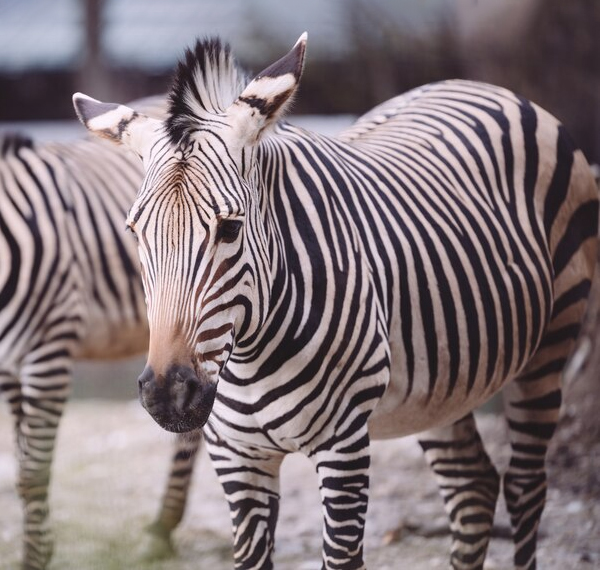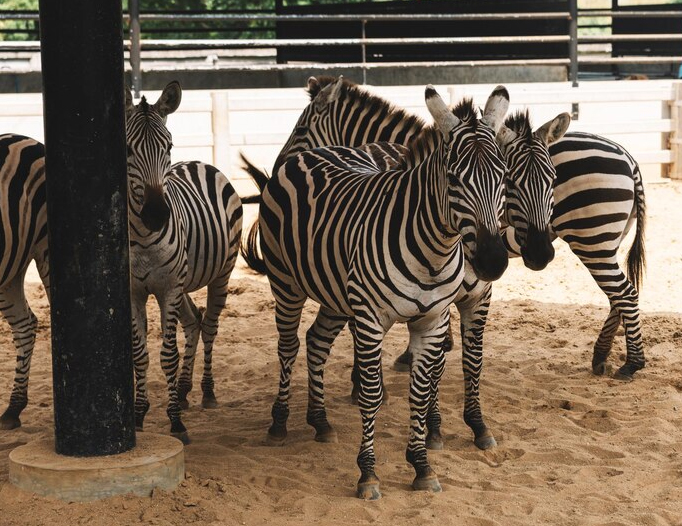Total Weight
Height
Diet
Lifespan
Total Weight
Height
Diet
Lifespan
Patna Zoo received its first pair of zebras under the animal exchange program, marking the beginning of zebra conservation efforts at Sanjay Gandhi Biological Park. In recent years, Patna Zoo welcomed: One female zebra named ‘Fulwanti’ from Lucknow Zoo.
One male zebra named ‘Vashishtha’ from Kanpur Zoo.
These zebras were introduced to promote awareness and conservation of this iconic species known for their striking black and white stripes and unique role in grassland ecosystems.
Although zebras have not yet been part of a breeding program at Patna Zoo, the carefully designed enclosure, with ample grazing space, a watering hole, and natural vegetation, ensures their well-being and natural behavior.


The zebra enclosure at Patna Zoo offers a spacious, open habitat that closely resembles the African grasslands where zebras naturally thrive. The enclosure features wide grassy fields, allowing the zebras to graze freely, alongside scattered trees and shrubs that provide shade and natural browsing opportunities.
The design ensures ample space for movement, reflecting the zebras’ natural herding behavior. Visitors can observe these graceful, striped animals from a safe viewing area, giving them a close look at their unique black-and-white patterns and social interactions.
The enclosure’s layout prioritizes the animals’ well-being, encouraging natural behaviors such as grazing, running, and resting in groups, while ensuring visitor safety and a clear educational experience.
The zebra at Patna Zoo is a stunning example of nature’s artistry, with its iconic black and white stripes creating a mesmerizing contrast.
Don’t miss the chance to observe these elegant creatures up close and appreciate the unique stripe patterns that make each zebra truly one of a kind!
| Attribute | Details |
|---|---|
| Weight | Typically 200 to 450 kg, depending on the species |
| Height | Around 4 to 5 feet at the shoulder |
| Diet | Grasses, herbs, leaves, and shrubs |
| Lifespan | Around 20-25 years in the wild, longer in protected environments |
| Conservation Status | Varies by species — Plains Zebra: Near Threatened, some species face greater threats |
| Population in the Wild | Stable for plains zebras, but Grevy's zebra and mountain zebra populations are declining |
| Social Structure | Highly social — live in herds, with strong family bonds and group protection behaviors |
| Unique Behavior | Each zebra’s stripe pattern is unique, helping with individual identification and camouflage |
| Feeding Pattern | Herbivores, grazing for hours daily, especially during early morning and late afternoon |
| Coat Feature | Distinctive black and white stripes, believed to aid in camouflage and temperature regulation |
| Closest Relatives | Related to horses and donkeys — all part of the Equidae family |
Zebras are herbivores, meaning their diet consists entirely of plant-based foods. They are grazing animals, spending much of their day feeding on grasses, which form the majority of their diet. In addition to grasses, zebras also consume leaves, shrubs, herbs, and young shoots, especially during the dry season when fresh grass is scarce.
Zebras are non-ruminant grazers, meaning they have a simple stomach and need to graze almost continuously to meet their nutritional needs. Their strong teeth and jaws allow them to chew tough grasses, and they play an important role in their ecosystems by maintaining healthy grasslands through their grazing patterns.
Open Now
All visits to Patna Zoo help fund our work both at the zoo and worldwide.